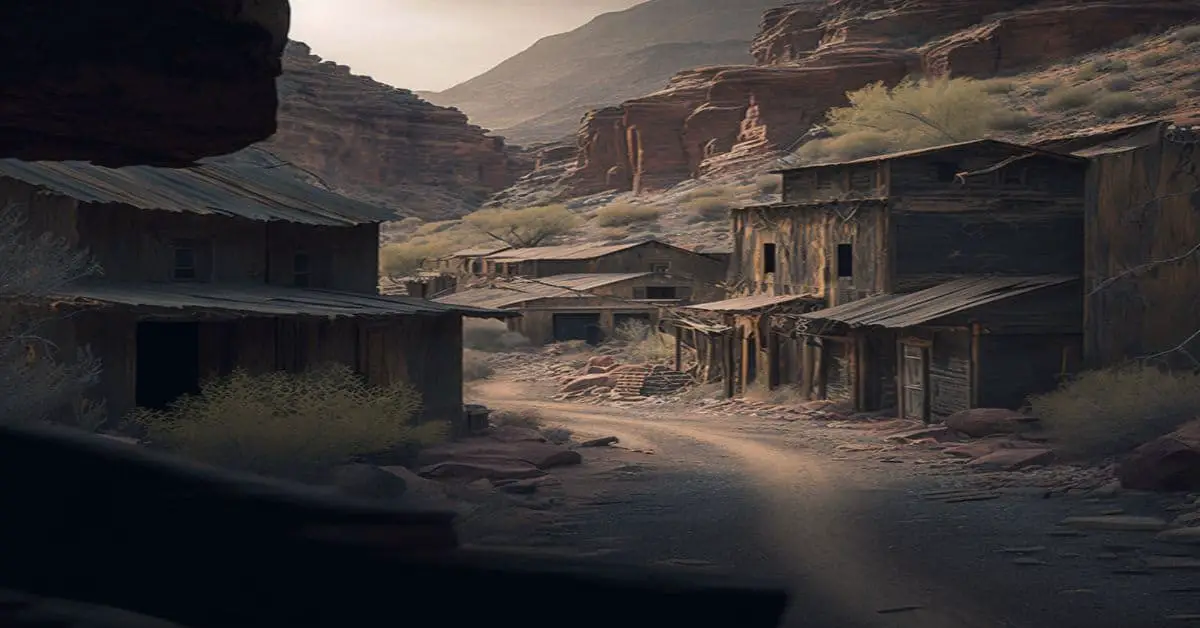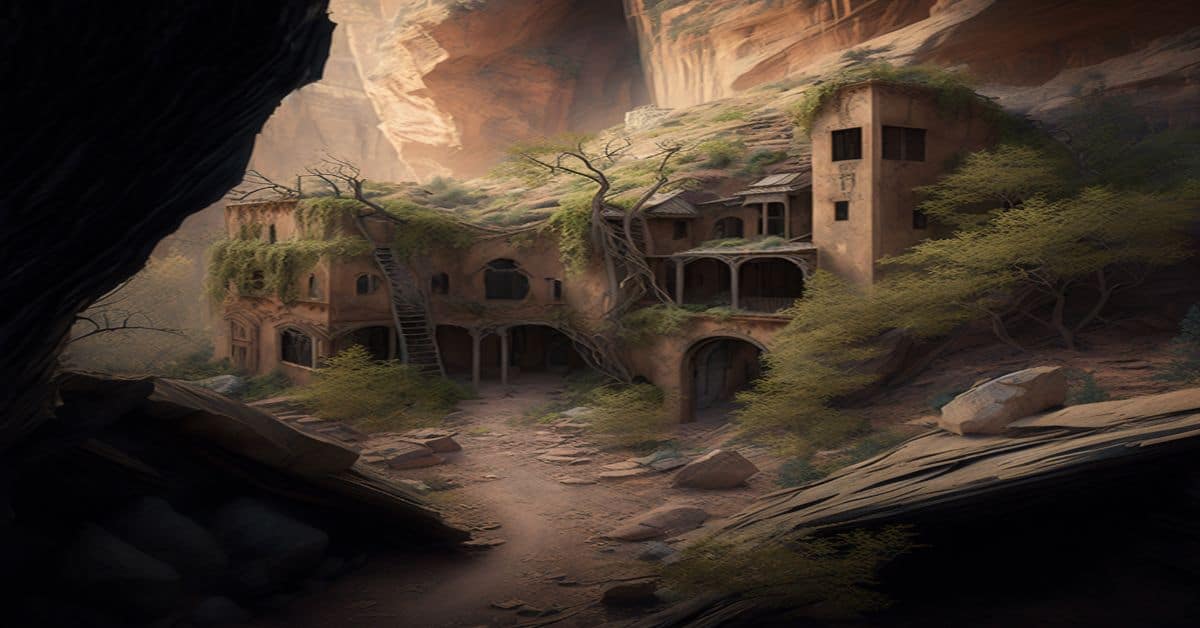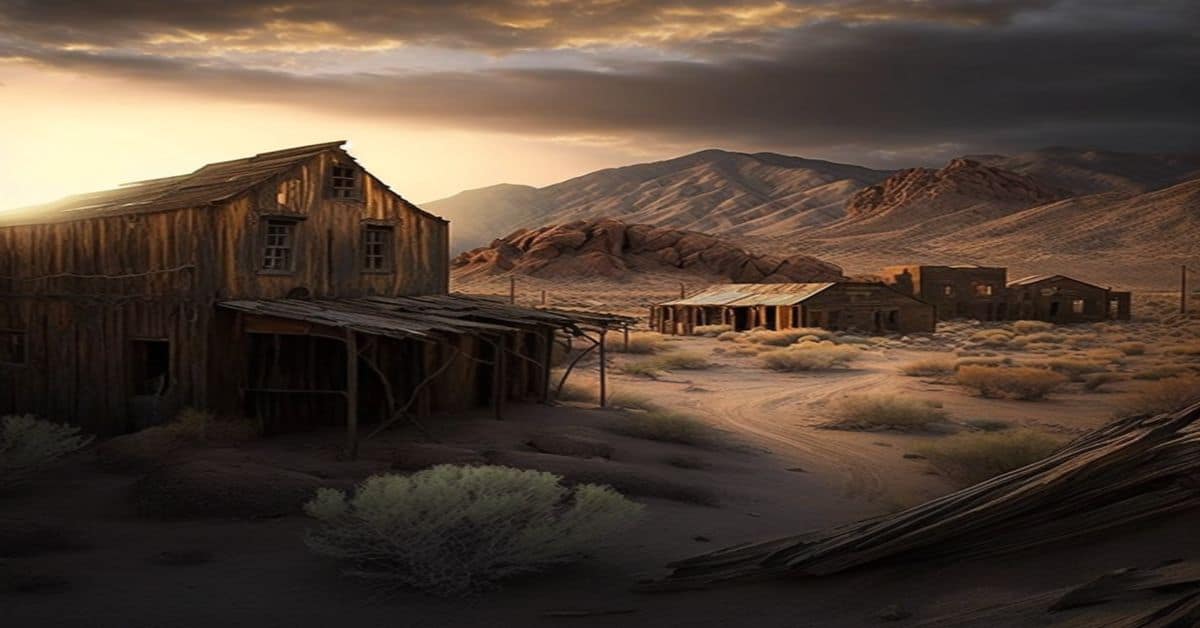Keighley, Kansas, is a town that has been frozen in time. Once a thriving community, it now stands as a haunting reminder of the transience of human existence. The remains of the town tell a story of a place that was once filled with life, but now lies abandoned and forgotten, its buildings slowly succumbing to the elements.
Nestled on highway 400, Keighley is an intriguing example of a ghost town that has been lost to time. The town was founded in 1880 by Moses Turpin, a minister, and was named after the inventor of the Keeley Cure. At its peak, Keighley was a bustling settlement, with a population of over 100 people. However, today it is nothing more than a shadow of its former self, with only a barn and a house remaining to tell the tale of its past.
Despite its deserted status, Keighley’s history is rich and fascinating, and it offers a glimpse into a bygone era that is both haunting and beautiful.
Key Takeaways
- Keighley, Kansas was founded in 1880 by Moses Turpin, a minister, and was named after the inventor of the controversial Keeley Cure for alcoholism.
- Once a thriving town with over 100 people, Keighley is now a ghost town with only a barn and a house, located on historic highway 400 near Augusta.
- Keighley’s impact on the region and the country has left a lasting impression, making it a unique and fascinating part of American history that offers a glimpse into a bygone era.
- Despite the eerie atmosphere with no signs of life or activity, Keighley’s notable figures, such as Turpin, make it a popular destination for history enthusiasts and ghost hunters alike.
Location and History
Located in Kansas, Keighley was platted in 1880 by Moses Turpin, a minister, and named after the inventor of the Keeley Cure, a method of curing drunkards.
The town was located just northeast of 104th and Story Creek.
Keighley’s founding and notable figures, such as Turpin, and its connection to the Keeley Cure movement, make it a unique part of American history.
The Keeley Cure was a popular method of treating alcoholism in the late 19th and early 20th centuries, and Keighley played a role in its dissemination.
However, the town is now a ghost town, and there are only remains of an old dancehall and house.
Despite its current state, Keighley’s history and impact on the Keeley Cure movement make it an interesting place to explore.
Remains and Status
The vestiges of Keighley, consisting of only an old dancehall and a house, serve as a poignant reminder of a once thriving community that has now been reduced to a desolate ghost town. The abandoned structures emit an eerie atmosphere, with no signs of life or activity.
Visitors to Keighley are left to imagine what life must have been like in the town’s heyday, and to ponder what could have led to its demise.
Despite its current status as a ghost town, Keighley remains an important part of American history. Its unique past, including the invention of the Keeley Cure, has left a lasting impression on the region and the country as a whole.
The town’s remains serve as a testament to the transitory nature of human settlements and the ever-changing landscape of the American West.
Geography and Significance
Situated on the eastern edge of the state, the abandoned community of Keighley holds a significant place in the collective memory of the American West. Its location on the historic highway 400 and proximity to the town of Augusta make it a popular destination for history enthusiasts and ghost hunters alike.
Despite its current status as a ghost town, Keighley’s impact on American culture cannot be overstated. The town’s namesake, the Keeley Cure, was a controversial method of treating alcoholism that gained widespread popularity in the late 19th century. The town itself was founded by a minister, Moses Turpin, and served as a hub for the treatment.
Today, the remains of Keighley, including an old dance hall and a house, serve as a haunting reminder of the town’s cultural significance.
Frequently Asked Questions
What were some of the notable events or occurrences that took place in Keighley during its existence as a town?
Keighley, Kansas experienced tornado devastation and railroad development as a town. Legends include a haunted cemetery and mysterious disappearances. Notable events highlight the town’s unique history, now preserved as a ghost town. A metaphorical graveyard of forgotten dreams.
Are there any legends or myths associated with Keighley or its former residents?
No local folklore or paranormal activity associated with Keighley or its former residents has been documented. The town’s history is primarily tied to its founding by a minister and its association with the Keeley Cure for alcoholism.
What impact did the closure of Keighley have on the surrounding communities and economy?
The closure of Keighley, a ghost town in Kansas, likely had minimal impact on neighboring towns or their economies due to its small size and lack of significant industry. Repercussions for local businesses were likely negligible.
Have any notable individuals or groups visited Keighley or expressed interest in its history?
There is no available information on notable individuals or groups who have visited Keighley or expressed interest in its history. However, preservation efforts have been made to maintain the remaining structures, and ongoing research is being conducted on the town’s unique history.
Are there any plans or efforts underway to preserve or commemorate the history of Keighley and its former residents?
No information is available about any current plans or efforts to preserve or commemorate the history of Keighley and its former residents. Community involvement in preserving history may be necessary to prevent the town from fading into obscurity.


